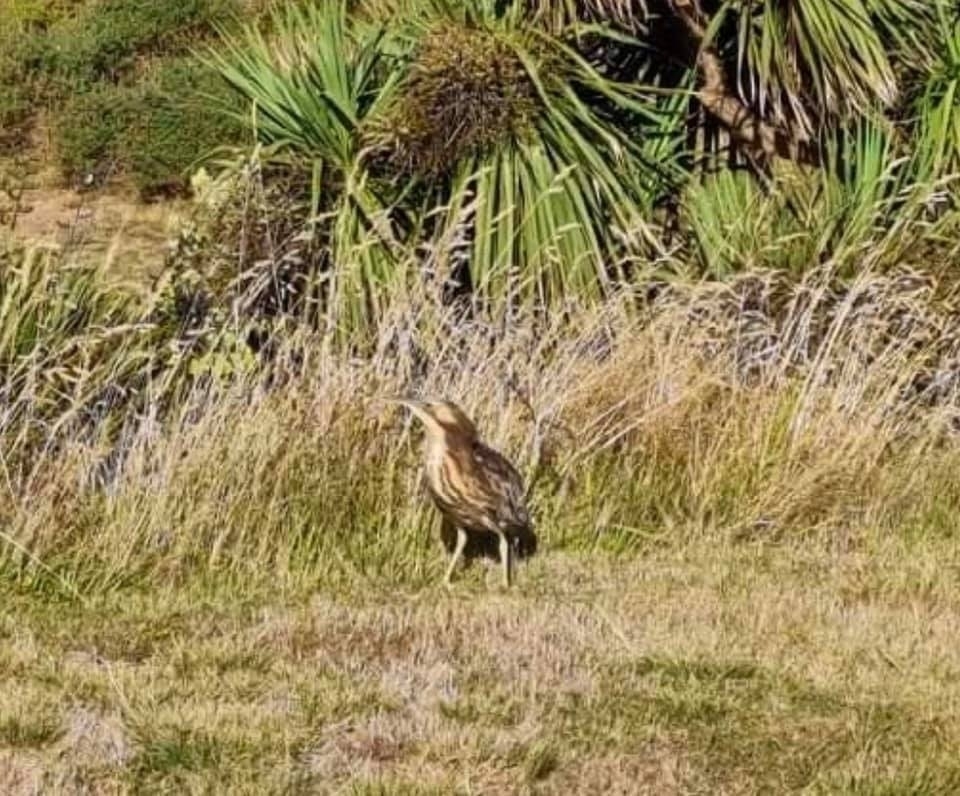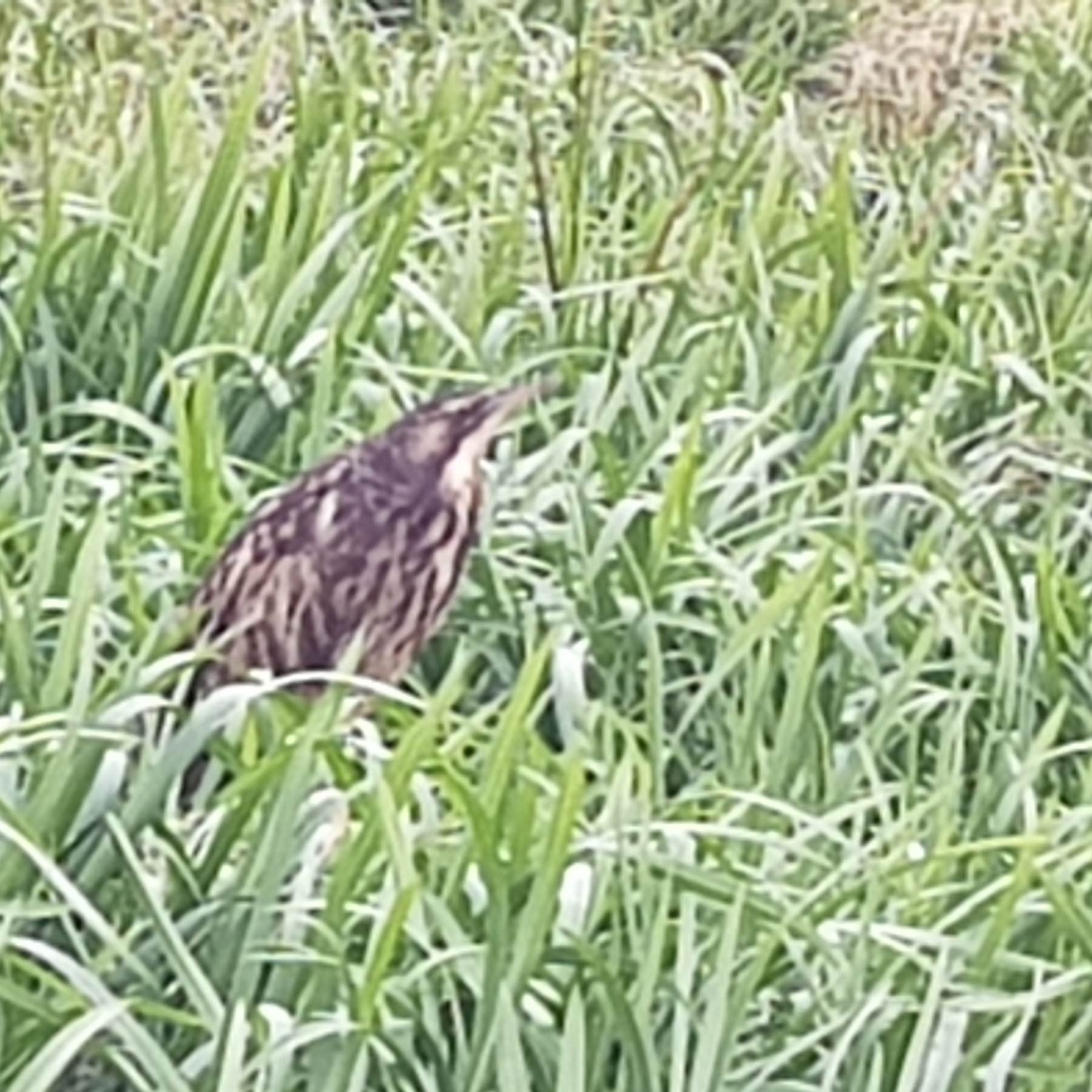
You’ll be very lucky to ever see this large long-legged bird as it prefers to hide. You may see it in grass near water, or ‘sloping’ across the road. If you listen closely on a still night you may hear its faint booming call.
It’s been spotted or heard a few times around Waikawa Beach and has 3 feeding areas locally: in a private wetland at the south end of Reay Mackay Grove, at the lakes at the corner of Reay Mackay Grove and Strathnaver Drive, and near the speedbump furthest from Sarah Street along Strathnaver Drive. He aha tērā? What is that?

Answer: it’s a Matuku-hūrepo | Australasian Bittern:
Status: Nationally Critical: most severely threatened, facing an immediate high risk of extinction.
Identification: Length: 74 cm; Weight: Males 1400 g, females 900 g
Similar species: Nankeen night heron, Little bittern
A large, stocky heron with a thick neck, heavy yellowish bill and relatively short yellow legs. The beige plumage has dark brown streaking and mottling, and there is a buff eye-stripe on the mainly dark head.
Bitterns are extremely cryptic and rarely seen. This is due to their secretive behaviour, inconspicuous plumage and the inaccessibility of their habitat. Their presence is most commonly discerned through hearing the distinctive ‘booming’ call of the males during the breeding season. Bittern occasionally show themselves in the open along wetland edges, dykes, drains, flooded paddocks or roadsides, often adopting their infamous ‘freeze’ stance, with the bill pointing skyward, even when caught out in the open.